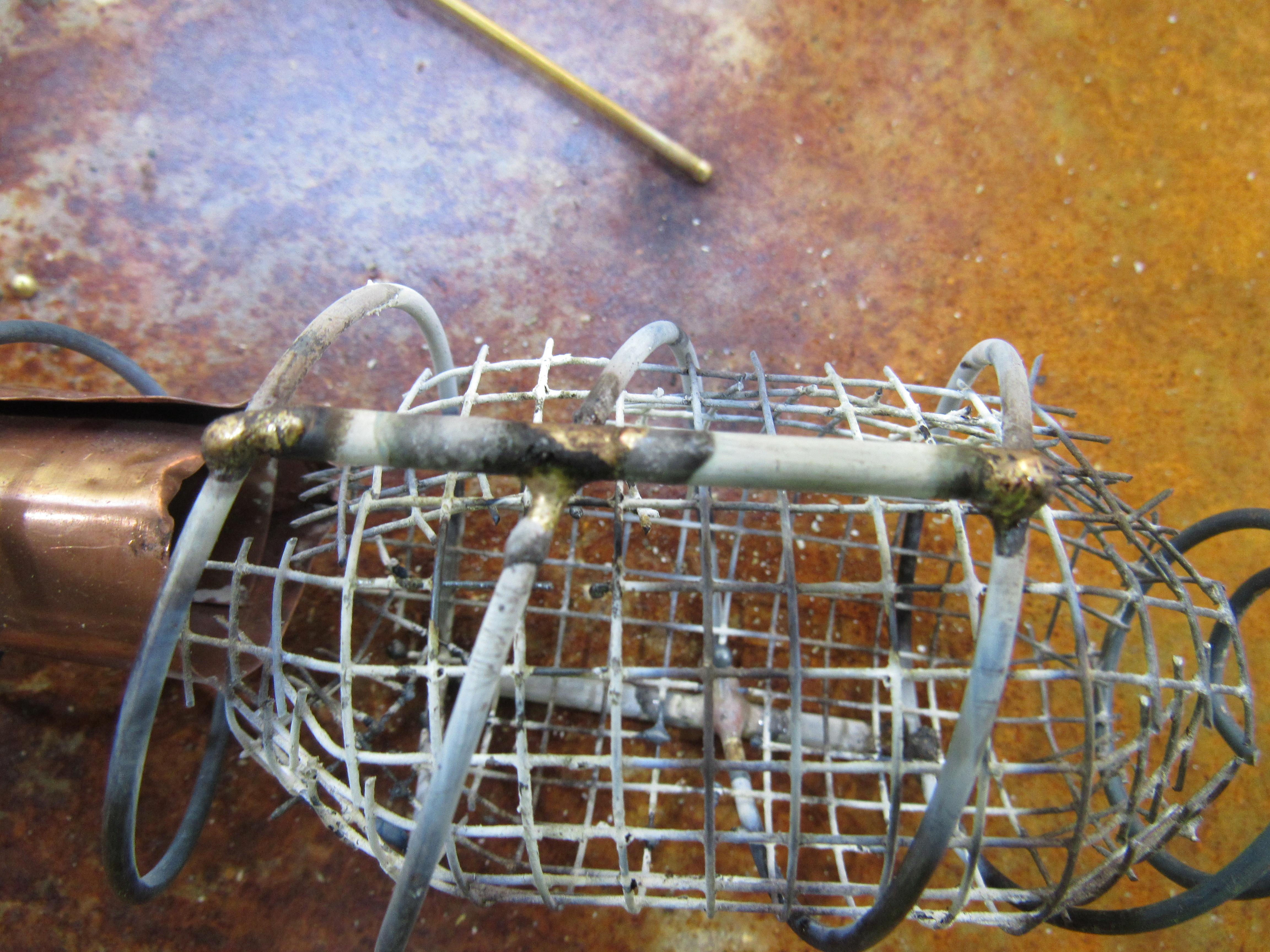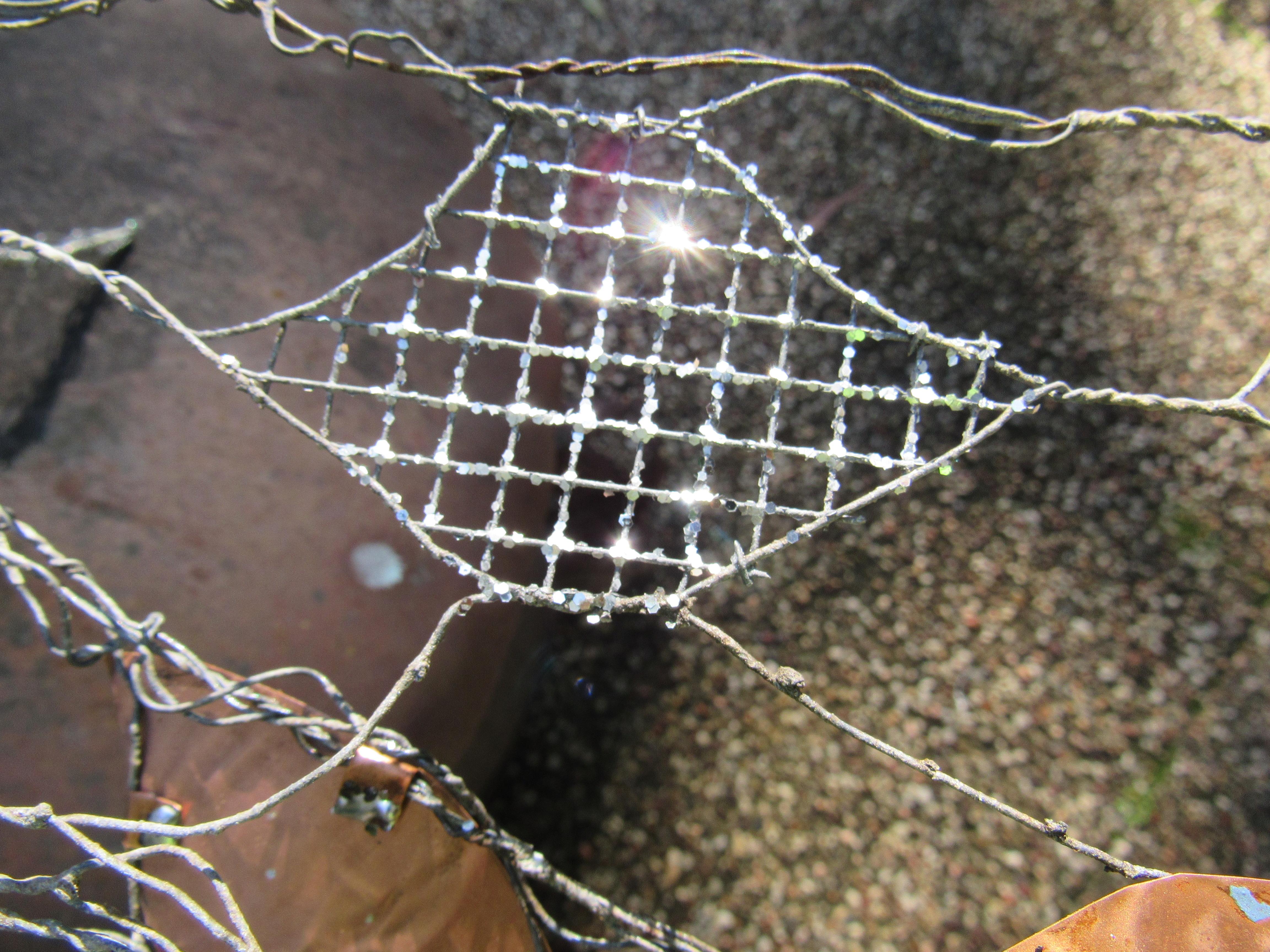WINNER - Dragonfly Art Sculpture - Without Buying Anything
4703 Views, 70 Favorites, 0 Comments
WINNER - Dragonfly Art Sculpture - Without Buying Anything

There are loads of real dragonflies that zip around our bush block backyard defending their territory, so it seemed a natural choice to make a sculpture to echo what is already there.
I really wanted to do this with bits and pieces that were lying in various stockpiles around the house, the shed, the workshop, the store room...you get the idea.
Supplies

Looking at a dragonfly one of the most distinctive things about the wings is the network of what I assume are veins. What is the most obvious thing that looks like that? Chicken wire - that's what it is called in Australia, I don't know if that is the same name everywhere.
My partner is an artist and ex-teacher so we have loads of stuff collected over the years. It was pretty easy for me to find almost any crafty item I could desire. Add to that the fact that I rarely throw away anything hardware-ish that might be useful some day in the workshop and I was spoiled for choice.
In your case, even if you don't have such a wonderful stash, there is nothing that is too hard to get your hands on or come up with an alternative. The toughest part might be doing some brazing.
The Body


I know that this creation is not going to be anatomically correct. Dragonflies have a very distinct head, thorax and abdomen
But this is about aesthetics rather than accuracy, so I made something that looks like a melding of the head and thorax.
The main part of the dragonfly body is a coil created by winding some wire around a pipe and then stretching and twisting it to get the basic shape.

Each of the wings of a dragonfly are a little wider than the length of the body. I chose an arbitrary 40cm length for the body, the wings are going to be 45cm - 50cm each.

Having made something similar in the past I knew that the body, being effectively a stretched spring, doesn't have a lot visual of substance. So I decided to fill the body with a cone of copper. I have no idea where a sheet of copper came from, but now I was glad it had been stashed for "one day" on top of a cupboard.
I hammered part of it flat, polished it and made a long cone with plenty of overlap. Once inserted into the body I was able to unwind the cone a bit so it was a nice snug fit. Because I was going to be doing some brazing, I would rather have inserted the copper later, but I knew that as this project proceeded it would be harder to get things through the head into the body.

Notice I used some fine wire screen to give the thorax some solidity. I spot soldered that to the copper cone which really helped make it all more rigid rather than be a bit floppy where they met.

What I love about this sort of project is that although I am making it up as I go along, as I get to various points, I look at what I have done and think "that is exactly what I was after". This is such a point...there will be others :o)
Legs

Another piece of junk, some of the reinforcing wire from an old inner spring mattress. It is useful for all sorts of jobs ranging from this to fusion welding and is free.
To create a strong place to which the wings would attach, I added a "spine".

Some time ago I bought an oxy-acetylene set and use it whenever I get the chance. It is a little hot for brazing in this situation, but by turning the gas down and being gentle you can get away with it. If you are using oxy, be very careful as the wire mesh vaporises easily.
I also added what I will call an under-spine for the legs.

A dragonfly has 6 legs. It was really difficult attaching individual wings, so I made each pair of legs in a single piece.

and then brazed them to the under-spine.

Wow...it was really starting to take shape now

Although I didn't do this until the last thing, since this section is about legs, this is how I finished them.
I cut a narrow rectangle of chicken wire, about 1.25 times the length of a leg, and then wrapped it around the leg a bit at a time. I found the easiest way to do it was to clamp a leg in a vice so that the others were in mid air making it easier to work on them than if it was on the bench. It also prevented the wings getting damaged as I worked. By squeezing the chicken wire against the leg, the bends stopped it sliding off.
Dragonflies have hairy legs...this worked well too. I was on a roll!

Wings
.JPG)

Each section of this project is complex in a different way, which makes it interesting, as I needed to use different skills and techniques plus come up with ideas.
To shape the wings I simply cut off a bigger piece of chicken wire, twisted and squeezed along what would become the wing's edge, constantly working my way around, twisting and trimming to form the shape of a wing. The first one will be the hardest, once you get the knack it is really easy and fun.

Veins! Another point where I was delighted with the outcome.
As you are shaping, notice that a wing is flat along the leading edge and has that beautiful curve along the trailing edge. Also, be sure to leave plenty of length where it is going to join to the spine.
I ended up overlapping the two opposing wings and then brazing them together, then I attached the double wing piece to the spine. The main reason I did it this was rather than one wing at a time is because it was easier...I would need 4 hands to hold 2 wings, the brazing rod and the flame.

Another thing that turned out well was that the wings were a bit floppy. So by twisting the tail of the opposing wing underneath it offered some support. I am sure you can do a better brazing job.
Decorating the Wings
.JPG)
Keeping in mind how these thin pieces of wire have so little substance that they seem almost transparent, I wanted to make the wings a bit more obvious. Of course, with a dragonfly, transparent wings is good, but as humans, and with art, we want to be able to see it.
I started by filling 2 random segments on each wing with this fine mesh. It is attached by leaving little tails of wire and wrapping them around the chicken wire border of the segment.

But I wanted more...more...more so I sprayed just the wire with some adhesive and sprinkled some glitter. Another idea I had was to glue 2 or 3 tiny square mirrors to randomly on wired segment. But it seemed overkill, one or the other and the glitter won.

It looked good, but I wasn't satisfied yet so I also filled 1 segment on each wing with polished copper sheeting.
The first step was to trace around one of the segments onto the copper. Notice I have left some tabs to fold over, this is how it will attach.

After cutting it out and polishing both sides this is what I end up with.

This is a good point for me to mention that you shouldn't make assumptions. My partner left a pair of scissors on my desk. In my brain that means those scissors are for me to use for whatever purpose I may have, including cutting copper sheet - which I might add, they did very well. However I should have known that they were precious dressmaking scissors that aren't to be used for anything except textiles. Don't be like me ;o)
Before folding the tabs over, I put a spot of solder on the "inside" of them and also where they would meet the sheet. Then I folded and applied heat from a soldering iron (there is no way I would use the oxy torch) to melt the solder spots together. I also added some solder to the outside of the tabs because I like that "industrial" look. Plus, I included a spot of solder on the other side of the copper to match, even though there aren't any tabs. Remember, this is all about aesthetics.

It is worth noting that after polishing, I sprayed all the copper and the glitter with a clear lacquer to hopefully stop it oxidizing and losing its shine.
Eyes

.JPG)
After the wings, the most prominent feature of a dragonfly are those amazing compound eyes which have something like 30,000 effective lenses.
How was I ever going to recreate that? I had a couple of blue glass hemispheres which looked OK, but not ideal. Then I spotted some tiny beads from a broken necklace in one of the crafty jars!

I mixed up some 2-part resin and painstakingly applied them one at a time using a match as an applicator

Yes, some of them are wonky, but they are so small, it doesn't matter. The overall effect is fantastic.
To attach them to the head I made 2 rings which were about the same size as the diameter of a hemisphere.

Brazing these to the head, I then glued the eyes on. For many years Araldite was my glue of choice, then I discovered JB Weld, incredible stuff.

Fly...
A few bends here and there to get parts just right and voila...

...the finished product, which took less than one day to make, joins some of the other sculptures in our beautiful backyard

Pretty excited that this won 2nd prize in the Art Challenge contest. My second Instructables prize